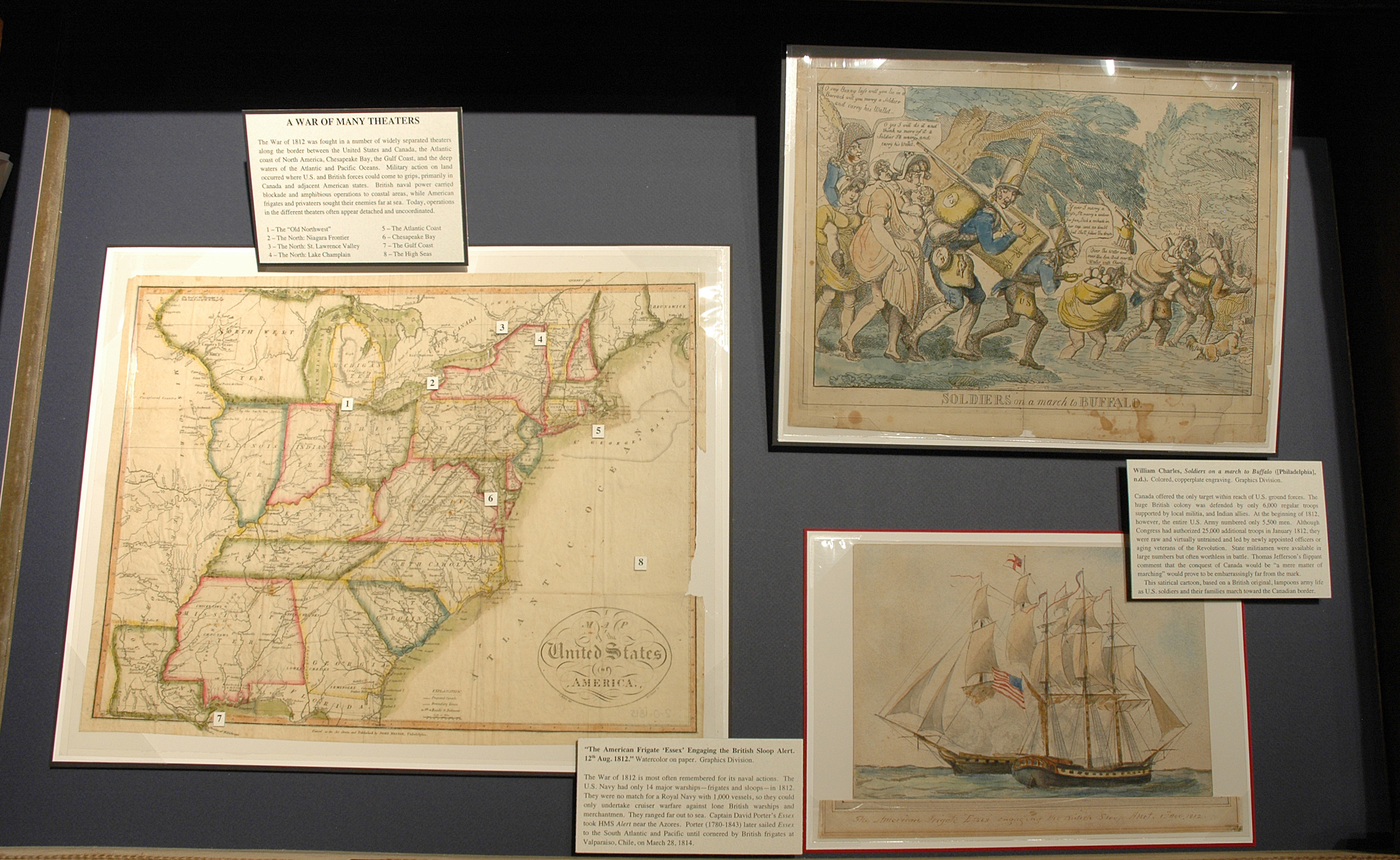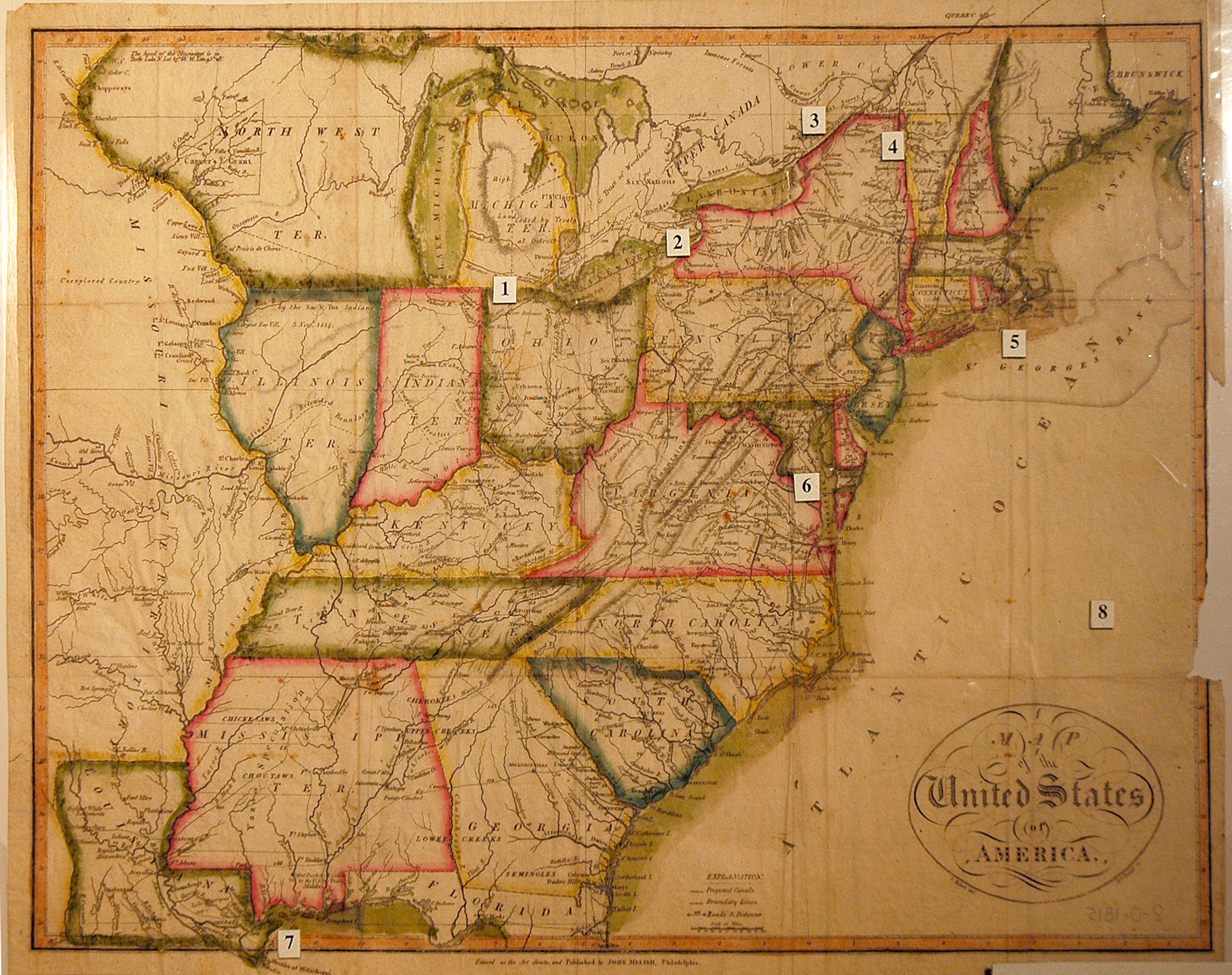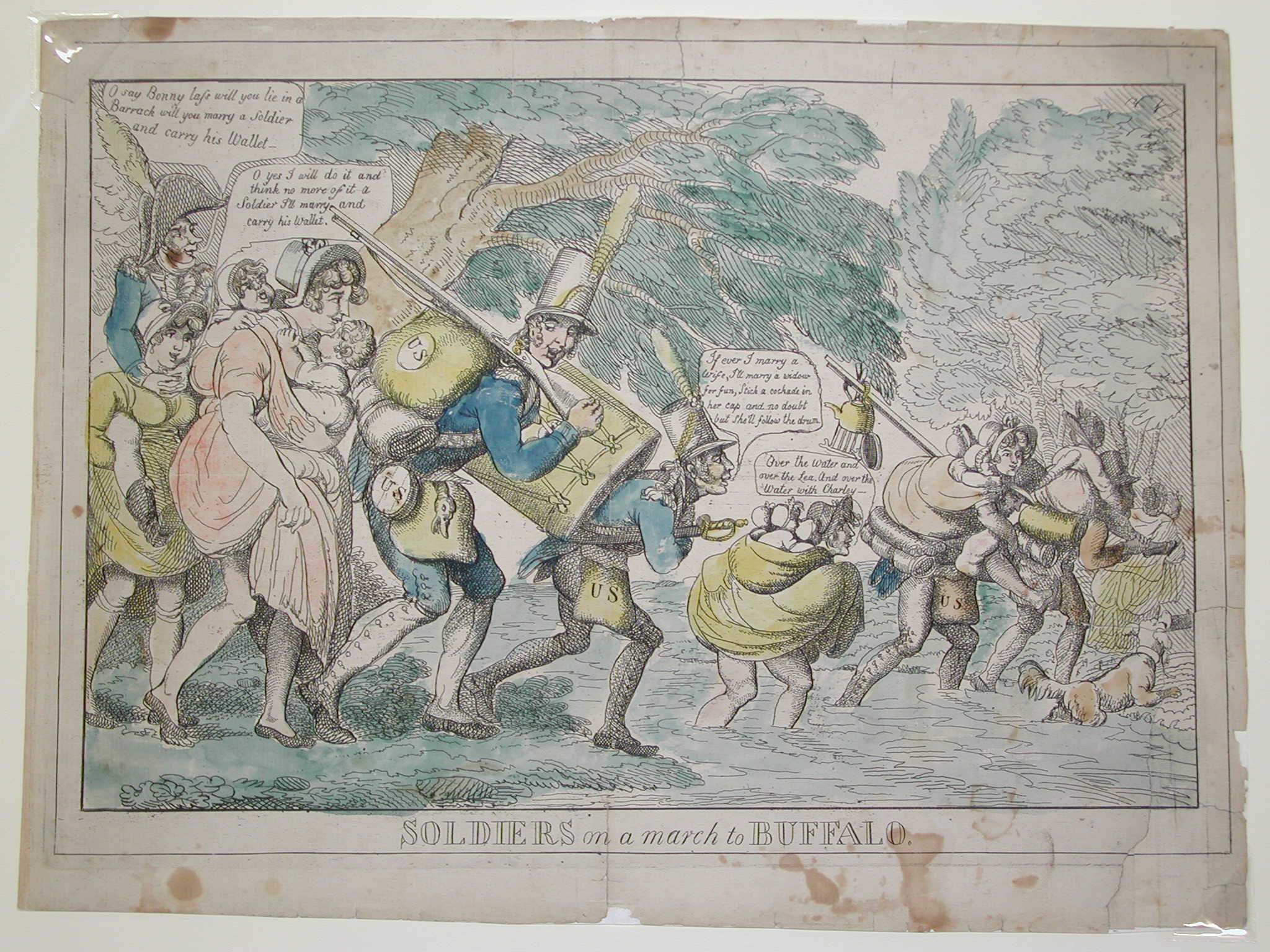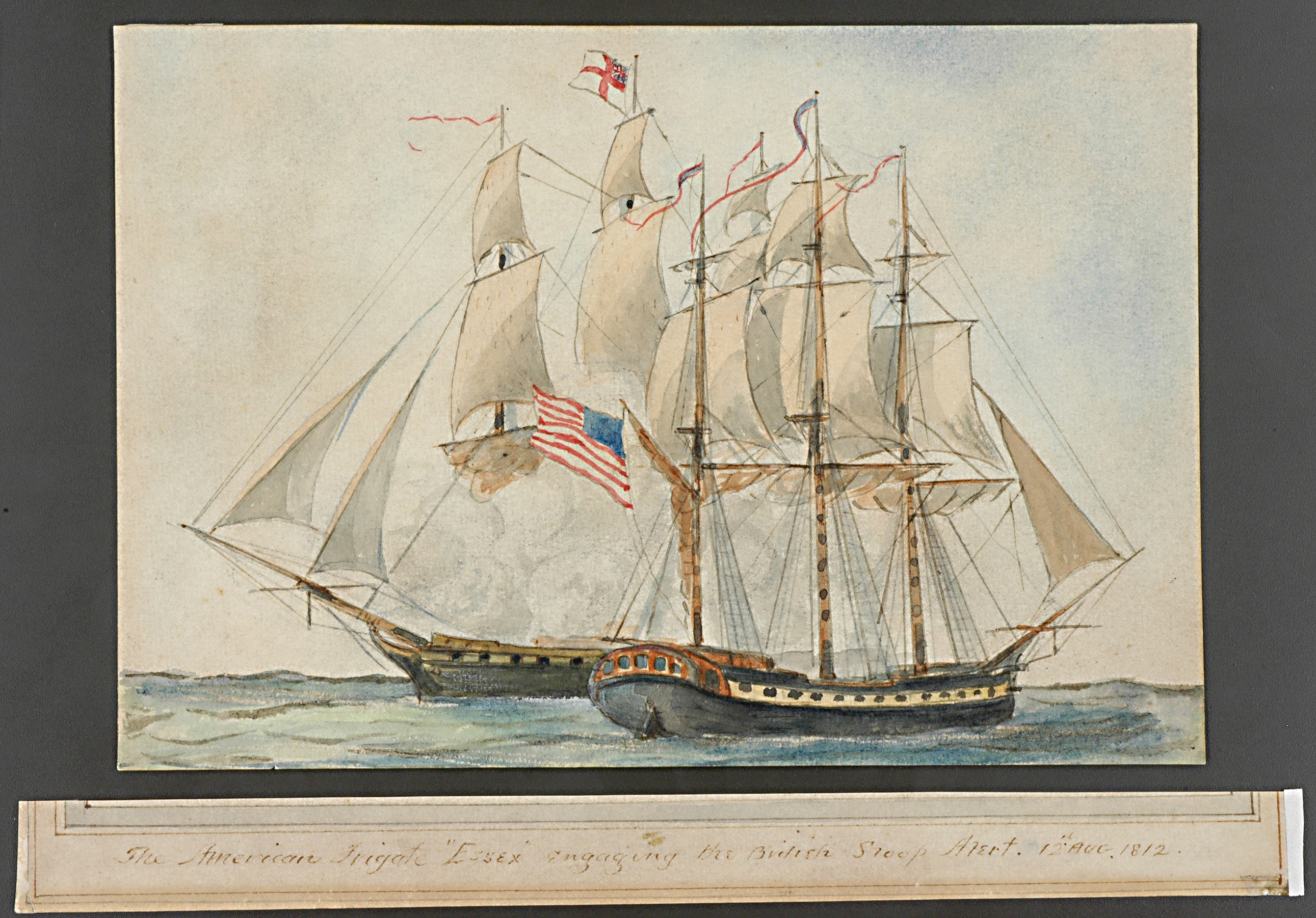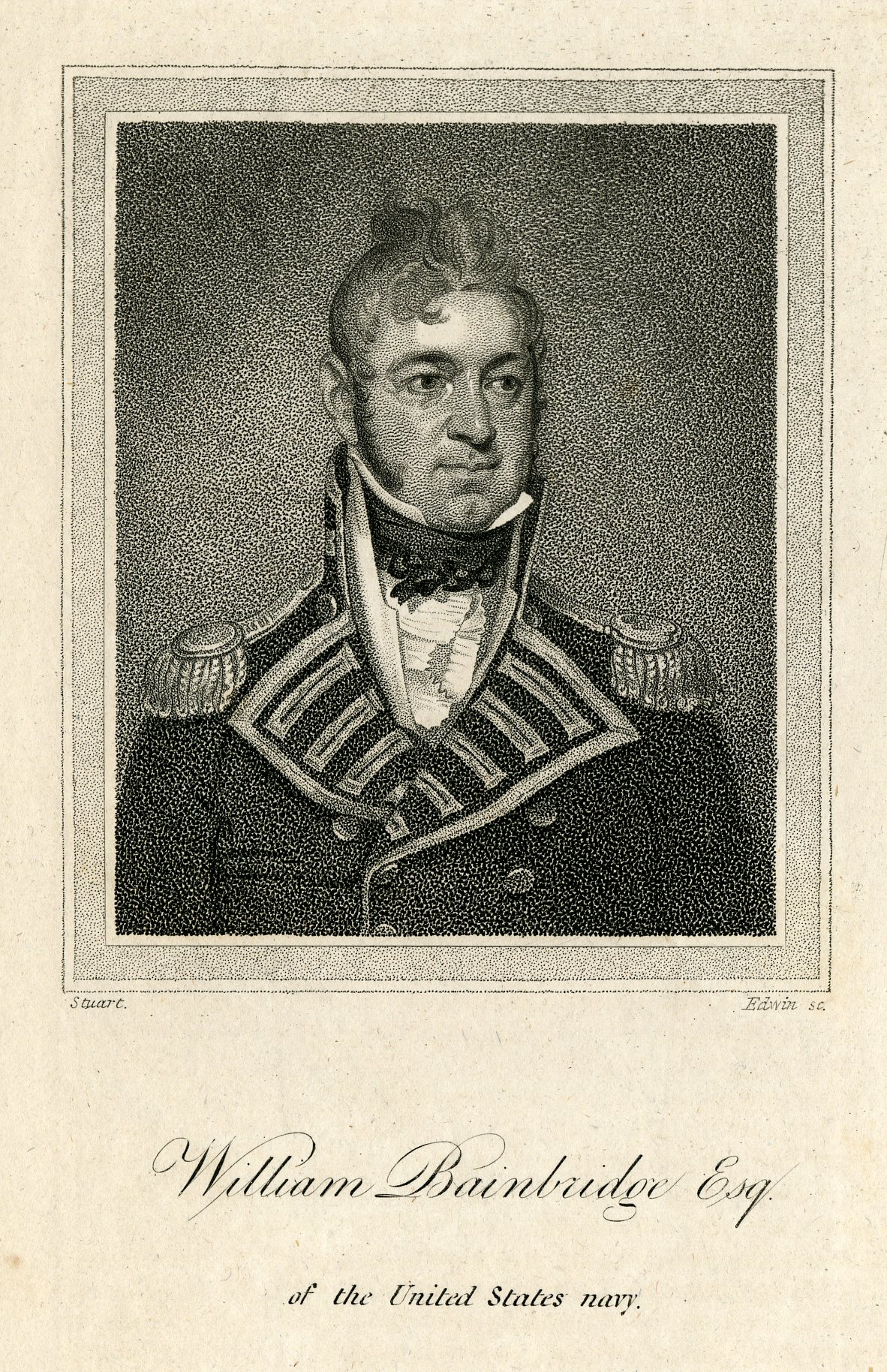The War of 1812: A Bicentennial Exhibition, Case 2
Case 2: A War of Many Theaters
The War of 1812 was fought in a number of widely separated theaters along the border between the United States and Canada, the Atlantic coast of North America, Chesapeake Bay, the Gulf Coast, and the deep waters of the Atlantic and Pacific Oceans. Military action on land occurred where U.S. and British forces could come to grips, primarily in Canada and adjacent American states. British naval power carried blockade and amphibious operations to coastal areas, while American frigates and privateers sought their enemies far at sea. Today, operations in the different theaters often appear detached and uncoordinated.
1 – The “Old Northwest” 5 – The Atlantic Coast
2 – The North: Niagara Frontier 6 – Chesapeake Bay
3 – The North: St. Lawrence Valley 7 – The Gulf Coast
4 – The North: Lake Champlain 8 – The High Seas
William Charles, Soldiers on a march to Buffalo([Philadelphia], n.d.). Colored, copperplate engraving. Graphics Division.
Canada offered the only target within reach of U.S. ground forces. The huge British colony was defended by only 6,000 regular troops supported by local militia, and Indian allies. At the beginning of 1812, however, the entire U.S. Army numbered only 5,500 men. Although Congress had authorized 25,000 additional troops in January 1812, they were raw and virtually untrained and led by newly appointed officers or aging veterans of the Revolution. State militiamen were available in large numbers but often worthless in battle. Thomas Jefferson’s flippant comment that the conquest of Canada would be “a mere matter of marching” would prove to be embarrassingly far from the mark.
This satirical cartoon, based on a British original, lampoons army life as U.S. soldiers and their families march toward the Canadian border.
“The American Frigate ‘Essex’ Engaging the British Sloop Alert. 12th Aug. 1812.” Watercolor on paper. Graphics Division.
The War of 1812 is most often remembered for its naval actions. The U.S. Navy had only 14 major warships—frigates and sloops—in 1812. They were no match for a Royal Navy with 1,000 vessels, so they could only undertake cruiser warfare against lone British warships and merchantmen. They ranged far out to sea. Captain David Porter’s Essex took HMS Alert near the Azores. Porter (1780-1843) later sailed Essex to the South Atlantic and Pacific until cornered by British frigates at Valparaiso, Chile, on March 28, 1814.

